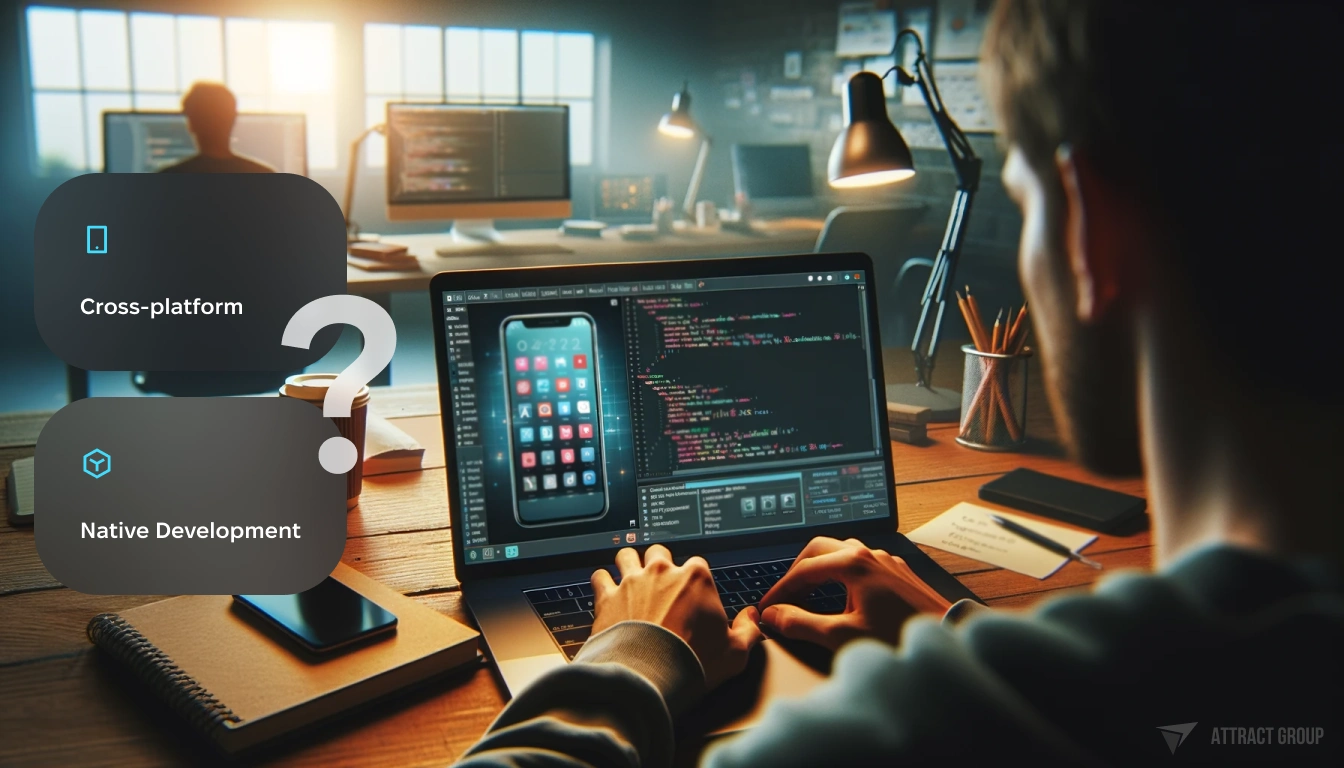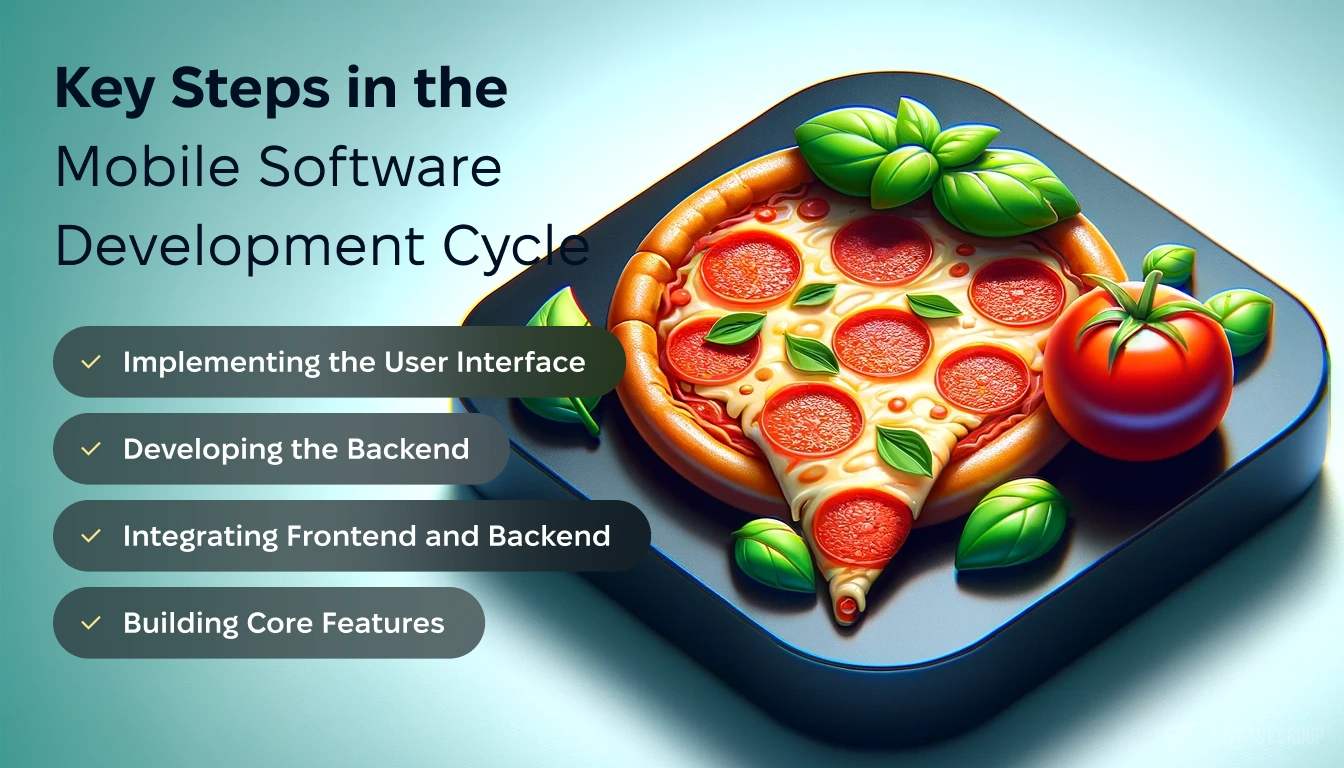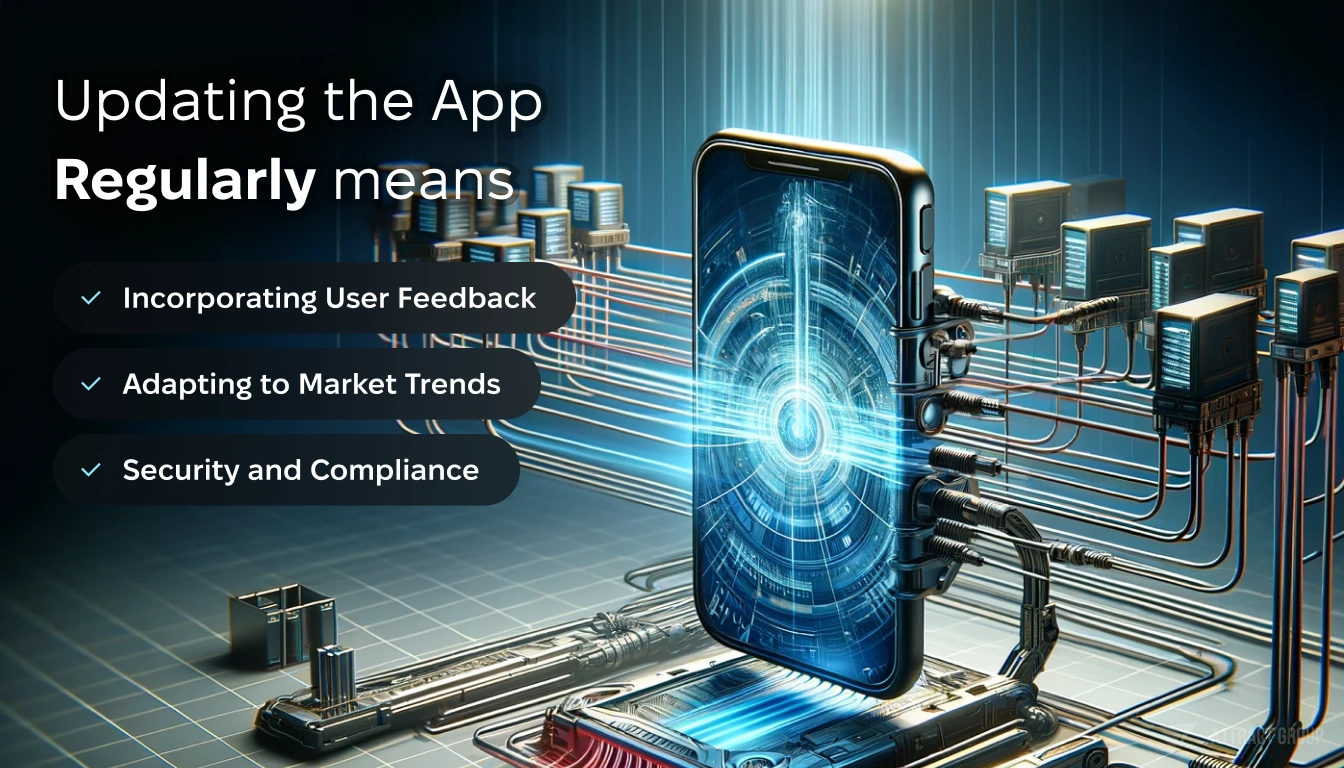Mobile App Development Lifecycle: A Comprehensive Guide to Creating Successful Applications
 27 December 2023
27 December 2023Understanding the importance of the app development lifecycle is crucial for developers, entrepreneurs, and businesses alike. Because the future of businesses belongs to the Internet and the web. The latest data shows that the mobile application industry is experiencing significant growth and success, with various statistics indicating its expanding impact on businesses and users. As of 2023, the revenue in the app industry is expected to reach $201 billion, a figure that reflects an impressive year-over-year growth. This growth is projected to continue, with consumer app spending possibly exceeding $270 billion by 2025.
Understanding the Importance of a Structured Approach to the App Development Process
App development is a complex and multifaceted task. To navigate through this complexity, a structured approach is essential. This approach streamlines the development process and provides a roadmap for successful app creation. It encompasses various phases, from the genesis of an idea to the release and maintenance of the app. Each step in the app development life cycle plays a pivotal role in ensuring the app’s functionality, usability, and appeal.

A structured approach in mobile app development also facilitates effective problem-solving and decision-making. It allows developers and the development team to anticipate potential challenges and address them proactively. This proactive stance is crucial in a field where user expectations and technological advancements constantly shift.
Our experts can provide consultation and advice to help structure your app development journey
The Mobile Application Development Lifecycle encompasses several integral stages, each contributing uniquely to creating a successful application.
- Idea and Conceptualization: The app concept is born, and market feasibility is assessed.
- Design and Planning: The visual and functional blueprint is set through UI design and technical architecture.
- Development: The core coding and programming uses selected tools and technologies.
- Testing and Quality Assurance: Performance and quality are ensured by identifying and resolving any issues.
- Deployment and Launch: The app enters the market through store submissions and marketing.
- Maintenance and Updates: Adaptation based on user feedback and market trends.
- Evaluation and Evolution: Ongoing assessment and planning for future versions to meet user needs and technological changes.
1. The Genesis of an App Idea
The beginning of mobile app development, or the genesis of an idea, is about envisioning a digital solution that addresses specific needs or gaps in the market. The initial stages involve brainstorming and creativity, where potential app concepts are explored and refined.
At this development stage, the idea is raw and malleable, offering the creative freedom to envisage something innovative. Yet, it’s also the stage where practical constraints must be considered.
Here, we are mainly focused on the questions like:
- “What problem does this app solve?”
- “What would be the main program of this app?”
- “What audience does this app cater to?”
- “How does it improve upon existing solutions?”
- “What value does it add to the user’s life?”
Market Research for App Development
Market research is a fundamental and necessary step in the mobile app development life cycle. This research provides critical insights into the target audience’s needs and expectations.
The steps market research involves are as follows:
| Steps | Description |
| Analyzing Market Trends | Research current trends in the app market to identify opportunities for new apps or features. Look at which types of apps are popular, which categories have seen recent growth, and where there are gaps. |
| Understanding Competitor Offerings | Research existing apps in the categories or spaces you are targeting to understand what solutions are already on the market. Analyze their features, user reviews, and opportunities to differentiate. |
| Identifying Gaps that Your App Could Fill | Based on your findings about market trends and existing competitor apps, determine if there are gaps in the market that your app could potentially fill through new features or functionalities. Figure out how you can create value for potential users. |
Identifying Target Audience for Developing a Mobile App
Identifying the target audience is understanding who will use the app and why. It involves creating user personas fictional representations of the app’s ideal users. These personas help understand the audience’s demographics, behavior patterns, preferences, and pain points.
The information gleaned from these personas guides many aspects of development, including feature selection, design aesthetics, and marketing strategies.
Studies show that the developed apps keeping the target audience in mind have much higher retention rates. For example, it is seen that the music apps that cater to specific audiences retain 42% of users after 90 days compared to those that do not cater to any particular audience. This stark difference underscores the critical role of targeted market research and audience understanding in developing a successful app.
Conceptualizing the Mobile Application Development: Transforming Ideas into Feasible Projects
Conceptualization developing an app is turning the initial idea into a defined project. This involves outlining the app’s core features, value proposition, and potential monetization strategies. It’s about creating a roadmap that takes the idea from a concept to a tangible project plan.

During conceptualization, feasibility studies are crucial. These studies assess the technical and financial aspects of the project, ensuring that the idea can be realistically developed within the available resources and technological constraints. It’s also the stage where initial risk assessments are conducted to identify potential challenges during development.
Let our team of experts handle the conceptualization and feasibility assessment to turn your idea into a successful app
2. Design and Planning Process: Laying the Foundation
The design of a mobile app is not just about aesthetics; it’s about creating a user-centric experience that is intuitive, engaging, and functional. The app’s user experience (UX) and user interface (UI) are crafted in the design phase. A well-designed app can significantly boost user engagement and satisfaction.
According to Adobe, companies with solid design practices outperform those without by as much as 219% on the S&P Index over ten years. This statistic underscores the critical role of design in the success of an app.
Wireframing
Wireframing is the first step in visualizing the app’s structure. A wireframe is a basic blueprint of the app, outlining its layout and the placement of elements without design details like colors or graphics. It’s akin to an architectural blueprint for a building, showing the structural arrangement of the app’s components.
Prototyping
Prototyping follows wireframing and involves creating a clickable model of the app. This model is more advanced than a wireframe, as it often includes design elements and interactions. Prototyping is a valuable tool for testing the app’s functionality and user experience in a simulated environment. It allows for identifying and resolving usability issues before the development phase begins, thereby saving time and resources.
3. Selecting Development Tools and Platforms
Selecting the proper development tools is essential in the mobile app development process. These tools can range from integrated development environments (IDEs) and code libraries to frameworks and platforms for deployment. The choice of tools directly impacts the efficiency of the development process, the quality of the final product, and the ease of ongoing maintenance.
When choosing development tools, developers must consider factors such as solid front-end development as well as back-end development, the app’s requirements, the team’s expertise, and the project’s budget and timeline. Popular IDEs like Xcode for iPhone or iOS apps and Android Studio for Android apps offer robust environments tailored for specific platform development. However, other tools and frameworks, like React Native or Flutter, allow for cross-platform development with a single codebase.
Cross-platform vs. Native Development Considerations
The decision between cross-platform and native development is a major one when starting an app development. Each approach has its pros and cons, and the choice largely depends on the app’s intended functionality, target audience, and performance requirements.

- Native Development: Native apps are developed specifically for one platform, either iOS or Android, using platform-specific programming languages like Swift for iOS and Kotlin or Java for Android. The main advantage of native development is the ability to fully leverage the capabilities of the underlying platform, resulting in optimal performance and a user experience that closely aligns with the platform’s standards. However, native development typically requires more resources and time, as each forum must maintain separate codebases.
- Cross-platform Development: Cross-platform development involves creating a single app that can run on multiple platforms, most commonly iOS and Android. Tools like React Native, Xamarin, and Flutter enable this approach. The primary advantage of cross-platform development is cost and time efficiency, as a single codebase can be deployed across multiple platforms. However, this approach may involve trade-offs in terms of performance and the ability to access platform-specific features.
According to Stack Overflow Trends, here are some real statistics of how technologies have trended over time based on the use of their tags on Stack Overflow (charts represent data since 2008 till now):
1. Flutter vs React Native (link):
2. If we add Kotlin (for native Android development) and Swift (for iOS native app development) (link):
As we see, Flutter, a cross-platform framework, has gained significant popularity among developers due to its ability to compile to native code, offering a near-native performance. In this article you can dive into Flutter vs React Native comparison.
Our team stays up-to-date on the latest tools and frameworks to build high-performing, scalable apps tailored to your needs
4. The Development Phase: Bringing a Software to Life
The programming development cycle is the technical execution of the app’s concept. It involves a series of stages where the app is coded, built, and tested until the app is ready. The cycle typically starts with setting up the development environment, followed by implementing the app’s core functionality as defined in the technical planning stage.
During this mobile application development process, the app developers write code to create the app’s features and functionalities. This process is iterative, involving continuous testing and refinement. Depending on the project’s requirements, the development cycle adheres to various methodologies, such as Agile or Waterfall. Agile methodology, for example, is famous for its flexibility and emphasis on iterative progress, allowing for frequent reassessment and adaptation as the project evolves.
Coding and Programming: Key Steps in the Mobile Software Development Cycle
Coding and programming are at the core of the app development project. Developers use the selected programming languages and tools to build the app. For native apps, this might involve using Swift for iOS and Kotlin or Java for Android. For cross-platform apps, languages like JavaScript (with frameworks like React Native or Flutter) are common.
Key steps in this process include:
- Implementing the User Interface: Translating the design and wireframes into code to create the app’s visual elements.
- Developing the Backend: Writing the server-side logic and setting up databases to manage data and ensure smooth app functionality.
- Integrating Frontend and Backend: Ensuring the user interface works seamlessly with the server-side components.
- Building Core Features: Developing the essential features that define the app’s functionality, aligned with the app’s purpose and user requirements.

5. Testing and Quality Assurance on Mobile Devices
The testing and quality assurance process begins from the early stages of development, ensuring that each part of the app functions correctly as it’s built. Identifying and fixing issues early helps reduce the time and cost of fixing problems later in the development cycle.
Continuous testing aligns with Agile methodologies, where iterative development and frequent testing are vital components. This approach allows constant feedback and improvement, ensuring the app’s reliability and performance are maintained throughout development.
Quality Assurance Models of Mobile Application Development Lifecycle
- Functional Testing: This testing process concerns the app’s functionality and checks whether it works as intended. Functional testing involves testing each app feature to ensure it behaves as expected. This includes checking the app’s navigation, workflows, data processing, and user interactions.
- Performance Testing: Performance testing assesses how the app may perform under various conditions. It includes load testing (how the app handles many users or actions) and stress testing (how the app performs under extreme conditions). The goal is to ensure the app remains stable and responsive, providing a smooth user experience.
- Usability Testing: Usability testing focuses on the user experience. It involves real users interacting with the app to assess its ease of use, interface attractiveness, and overall user experience. This type of testing helps identify any navigational difficulties or user interface issues that might not be apparent to developers but could frustrate users.
- Security Testing: Security is a top concern in today’s digital environment. Security testing checks the app for vulnerabilities that could lead to data breaches or other security issues. This includes testing for risks like SQL injections, data encryption, and secure data storage. Ensuring the app’s security is crucial for protecting user data and maintaining trust.
6. Deployment and Launching Phase of Mobile Application
Finalizing the app for launch involves several key steps. Firstly, the app undergoes a final round of testing to ensure everything works flawlessly. This final testing phase might include beta testing with a select group of users to identify any last-minute issues.
Once testing is completed and the app is deemed ready, the next step is to prepare it for deployment. This preparation includes finalizing the app’s metadata, title, description, keywords, and screenshots. These elements are crucial as they significantly influence how users perceive and discover the app on the app stores.
App Store and Google Play Submission Processes
The submission process for app stores is a critical step in deployment. The methods for Apple’s App Store and Google Play Store involve specific guidelines that must be adhered to.
- Apple App Store: Submitting an app to the Apple App Store requires a developer to follow Apple’s strict guidelines. This includes ensuring the app meets Apple’s design, content, and functionality standards. The app is submitted through Apple’s iTunes Connect platform, where it undergoes a review process before being approved for listing in the store.
- Google Play Store: The process for submitting an app to the Google Play Store is somewhat more lenient than Apple’s. Developers need to sign up for a Google Play Developer account, prepare the app with Google Play’s required assets, and submit it through the Google Play Console. The app is then reviewed by Google before it goes live on the Play Store.
It’s important to note that both stores have review processes, and approval times can vary. Developers should account for this in their launch timelines.

Post-launch Marketing Strategies
Launching the app is just the beginning of its journey in the market. Effective post-launch marketing strategies ensure the app gains visibility and attracts users. These strategies might include:
| Strategy | Description |
| App Store Optimization (ASO) | Optimizing the app’s listing with the right keywords, engaging descriptions, and compelling visuals to improve its visibility in the app stores. |
| Social Media Marketing | Using social media platforms to promote the app, engage with users, and build a community. |
| Influencer Collaborations | Partnering with influencers to reach a wider audience and gain credibility through endorsements. |
| Content Marketing | Creating valuable content like blogs, videos, and infographics to drive interest and traffic to the app. |
| Paid Advertising | Implement targeted ad campaigns on platforms like Google Ads or Facebook Ads to reach potential users. |
Let us handle your app store optimization, social media marketing, and more to get your app in users’ hands
7. Monitoring and Maintenance Stage
Monitoring and maintenance are ongoing processes that extend far beyond the app’s initial launch. In this phase, developers and app owners continuously track the app’s performance, user engagement, and feedback. This ongoing analysis is vital to understand how the app is being used, identify any issues, and determine areas for improvement.
Monitoring involves using various analytics tools to track key performance indicators (KPIs) such as user engagement, session length, retention rates, and crash reports. These metrics provide valuable insights into the app’s performance and user satisfaction. Regular monitoring helps quickly identify and address any technical issues, bugs, or crashes that could negatively impact the user experience.
Updating the App Regularly
The app maintenance phase includes regular updates to the app. These updates are about fixing bugs, adapting to user feedback, upgrading app functions, and evolving market trends.

- Incorporating User Feedback: User feedback is a goldmine of information for app improvement. Regularly updating the app based on user suggestions and complaints helps enhance the user experience and meet their expectations. This can include adding new features, improving existing functionalities, or redesigning aspects of the app for better usability.
- Adapting to Market Trends: The mobile app market is dynamic, with constant technological changes, user preferences, and industry standards. Apps need to evolve to stay relevant. This could mean integrating new technologies, adjusting to changes in device capabilities, or updating the app to align with the latest design trends.
- Security and Compliance: Regular updates should ensure the app remains secure and compliant with legal requirements. This is especially important for apps that handle user data, where data privacy and security regulations may change over time.
8. Evaluating and Evolving: The Full-Cycle Development Approach
The mobile app development lifecycle is an ongoing cycle of evaluation, improvement, and adaptation. Even after the app is launched, the development team must continually assess its performance and relevance. This ongoing evaluation is crucial for identifying areas that need enhancement or adaptation in response to user feedback, market trends, or new technological developments.
This continuous cycle helps maintain the app’s relevance and usability over time. It involves regularly gathering data on user behavior, preferences, and feedback and staying abreast of any changes in technology or market trends that could impact the app.
Iterative Development: Responding to User Needs and Technology Changes
Iterative development is a core principle of this approach. It implies that the app is continuously improved in a series of iterations or updates. Each iteration involves making changes or additions based on user feedback and technological advancements. This approach allows for flexibility and responsiveness in the development process, ensuring that the app can quickly adapt to changing user needs or new opportunities presented by emerging technologies.
For instance, an app initially launched with certain features might later introduce additional functionalities or enhancements based on user requests or capitalize on new technology like augmented reality or machine learning.
Planning for Future Versions and Scalability
Planning for future versions of the app is an integral part of the evaluation and evolution process. This involves adding new features, making improvements, and considering the app’s scalability.
Scalability planning ensures that the app can handle increased users or data without compromising performance. Scalability considerations might include optimizing the app’s backend infrastructure, ensuring the codebase is maintainable and can accommodate future changes, or planning for integration with other systems or services.
Conclusion: The Ever-Evolving Mobile App Development Lifecycle
As we conclude our mobile app development lifecycle process, it’s clear that this process is much more than a linear path from idea to execution. It is an ever-evolving cycle of innovation, development, evaluation, and adaptation.
The journey of mobile app development is intricate and multifaceted. It starts with the genesis of an idea and flows through various stages like design and planning, development, testing, deployment, and ongoing maintenance. Each phase is critical in ensuring the app’s success and relevance in the competitive digital marketplace.
With our full-cycle development approach, we can guide your app from concept to launch and beyond
A comprehensive approach to app development is essential. It involves the technical aspects of building an app and understanding market trends, user needs, and the ever-changing technology landscape. This approach ensures the app functions well and delivers a seamless and engaging user experience.
The landscape of mobile app development is poised for continuous change and innovation. Emerging technologies like artificial intelligence, machine learning, augmented reality, and the Internet of Things (IoT) are already beginning to influence how apps are developed and used.
These technologies open up new possibilities for personalized user experiences, more interactive and immersive app environments, and more innovative, more efficient app functionalities. For instance, AI and machine learning can be used for advanced data analytics, personalized content delivery, and predictive functionalities in apps.
Moreover, the increased focus on privacy and security, especially with the growing concerns around data protection, will continue to shape app development practices. Developers will need to prioritize secure coding practices and incorporate robust security measures to protect user data.









